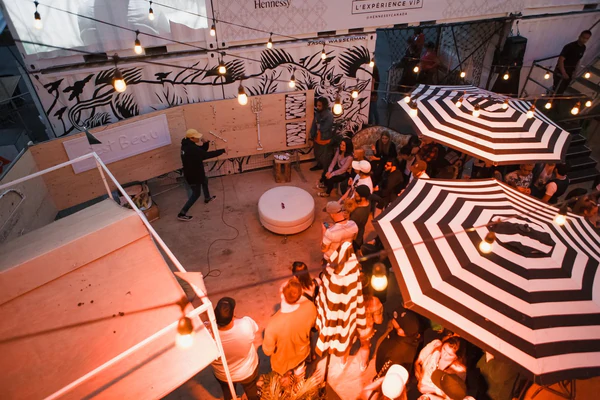How to create good digital sponsorship activation

By Samantha Phelan
There’s a massive disconnect in the sponsorship space that you can observe across most activations that stems from an overall lack of understanding surrounding digital assets and valuation of digital properties.
Conference after conference will preach the value and importance of the digital space, showing you how multi-million dollar brands with robust teams of individuals and insights manage to pull together a flawless digital media activation. You’ll see the millions of impressions, conversions that are sky high, and you’ll then be inspired to go back to work and try your best to replicate the activation, only to realize that you have one of three problems- or likely a combination of all three:
- You rely on external resources (or other team members) to help you understand your digital assets.
- You have no idea how to value digital assets.
- You don’t understand how to define success of a digital media activation beyond surface level metrics.
Let’s dive a little deeper into these, shall we?
Property Side
If a partner comes to you asking for exposure in the digital space with an overall objective of brand awareness, chances are most sponsorship coordinators have a general level of understanding to know what’s been performing well on their channels and then start the ideation process of integration from there. But very few sponsorship coordinators or management I’ve encountered on the property side truly understand how the algorithms are performing recently, or what types of digital integrations are best received by followers. Therefore you ask a digital team member whose understanding of valuation and sponsorship fulfillment is limited, and they tell you what works for the property’s social channels but not necessarily what will work best for your partner.
A perfect example of this is sponsored lineups in sports teams. Lineups are traditionally one of the most sought after pieces of content on a sports team page. They communicate a heavily sought after piece of information that fans flock to before a game begins. When a partner says they want brand awareness (otherwise known as wanting people to notice them), these line-up posts have been a go-to piece of content to sell partners because the metrics behind them speak for themselves. The problem with line-ups on brand awareness is not the metrics that come in return—it’s the recall rate of these types of partnerships. There are ways to provide better brand awareness now that actually deliver “consumed impressions” for a partner and their logo or brand messaging, as opposed to simply slapping a logo on a line-up graphic and hoping fans will feel any type of emotion or sentiment once they see it. The digital space has evolved to be more dynamic, more creative, more visual, and yet we’re still delivering activations for partners that were successful 5 years ago. That is about 4.5 years too long in the digital media space.
St. John’s IceCaps
To use a better example of brand integration, take this recent video series that we ran last year with the St. John’s IceCaps (AHL Affiliate of the Montreal Canadiens) and their partner Rocket Bakery. Rocket Bakery wanted to build brand awareness but in a way that they could actually interact with the fans that were consuming their content. They asked their players to pick their favourite meals from a list of menu items and filmed their responses. Then they created a short video series where they played an intro of Rocket Bakery, segueing into the question and pausing to show a multiple choice menu, whereby fans had to comment on the post to guess which item the player chose. If they chose correctly, their name was entered in a draw for a chance to win a gift certificate for Rocket Bakery.
This activation was more involved in terms of production and effort, but it also delivered more significant returns in exposure. Facebook’s algorithm works in such a way that incorporating video elements and encouraging comments would favour overall exposure far greater than posting a static graphic of a line-up, where the content is more likely to be consumed without engagement from the fans. Rocket Bakery followed up with almost every fan that commented with a quality comment or suggestion in return, thereby building a stronger level of awareness and interaction with fans. Same price for two activations, drastically different results.
Valuation
Once you get the hang of the digital space and what could actually be a value-added activation for your partners, the next big hurdle people face is valuation. Chances are when you came into your role as a sponsorship manager or coordinator, you were given a list of rates that predated you, and then a small understanding of how those rates are justified. The problem with the digital space is that it is fairly new and constantly changing. There is no one out there telling anyone in sponsorship how to break it down and value each digital asset properly, as it’s often on a case-by-case basis. So instead we default to trying to value with as much common sense as we can, which often leads us to compare value to how we sell other forms of online advertising. Do you value it like a website banner? Cost per click on a Facebook Ad? Pick some arbitrary number to cover the cost of a platform you want to use in tandem with it? Or maybe instead you choose to value it at a similar price point to TV or newspaper based on “circulation” or reach. And just when you think you’ve started to get a handle on it, platforms like Facebook or Instagram will readjust their algorithms to change the dynamics of what’s engaging to your audience, and you’ll have to start from square one all over again.
Brands
All of this confusion is not just common to the property side. Larger brands often work in silos, where a sponsorship team handles the activation and the digital team might only participate if there’s a need for support to enhance the partnership. In fact, this entire disconnect really works to the property’s advantage, as even when post-activation reports are given, the sponsorship team rarely has the in-depth knowledge to understand if the results are successful or not. They might see a high number of impressions, know that their objective was brand awareness, and then check the box for renewal without a second thought. This is much likelier with larger brands that are juggling multiple partnerships and don’t have the dedicated resources to do in-depth analysis on each of their partnerships. It’s a higher incidence than with smaller companies, who might be more budget conscious, have a much smaller sponsorship portfolio, and have less understanding of the analytics reported back to them, but are still pushing for as much insight as they can get on how the activation went – not just the highlight reel.
The Current State of Sponsorship
So what happens when neither the person selling the property assets nor the person representing the brand on the sponsorship side has a clue how to properly run a digital media activation? Poor outcomes. Sponsored lineups for brands that hoped for lead generation, for example, which is the equivalent of giving in-stadium visibility (rinkboards, in-field banners, trackside advertisement, etc) to a partner that hoped for drive-to-retail promotion. Sure, there may be some sort of intangible there that the exposure gave the brand, but you’d never be able to measure it.
You wouldn’t sponsor a live event and not have an on-site presence; you wouldn’t buy a banner and not ask for its measurements or placement to ensure optimization of space and exposure; you wouldn’t buy title partnership of the Super Bowl and then sit back and expect the sales to come in on mentions alone. And yet, here we are in the digital space with seemingly complete complacency and no shame in our game. I think the space is due for a complete shake-up, wake-up, and shift in execution.
Account executives never needed in-depth knowledge to understand signage. Most people can grasp what a sign is and how it can be valued based on placement, traffic, broadcast exposure, etc. But most people cannot grasp Facebook Live’s capabilities and what value it has based on views, reach, and engagements, not without some training. We really need to ensure that anyone working in the space of sponsorship has at least a basic understanding of these platforms, but ideally a comprehensive knowledge on it, so that smarter, more creative sponsorships can be sold.
We also need brand managers and other brand facing sponsorship specialists to become better informed so that they are asking the right questions. If I got a report back that show my “Brand Awareness” focused activation harnessed over 500,000 impressions, I wouldn’t immediately default to renew. I would need to be educated enough to go back and ask for views. To ask for engagement rate. To ask for demographics on those viewers. I would need to be able to do some quick calculations to determine cost of engagement and then decide if that activation was successful for me or not.
For those brands looking for lead generation, they should be looking beyond how many leads they received through the activation. They should be asking about the quality of those leads; how many of those leads were unique; how many of those leads were within the right demo that the sponsor was looking to target; how many of those leads went on to open up an email from the partner after the fact or made a purchase.
There is so much more knowledge required to play in this space now and to do it well. The reason you see some top brands absolutely killing it in this space is because they have armies of people – smart people, well informed people – working on an activation from start to finish and even iterating frequently in between. Gone are the days when brands could just slap their name on a sign and call it a good ROI. The possibilities are just so much bigger now, and denying it by playing ignorant to the advancements made in this arena will undoubtedly leave you underperforming and forgoing massive amounts of revenue opportunities – for both brands and properties.
If you’d like to hear more about Samantha’s perspective on sponsorship in the digital media space, she’ll be speaking at the Relevent Conference, November 7-8, 2017 in Montreal.
